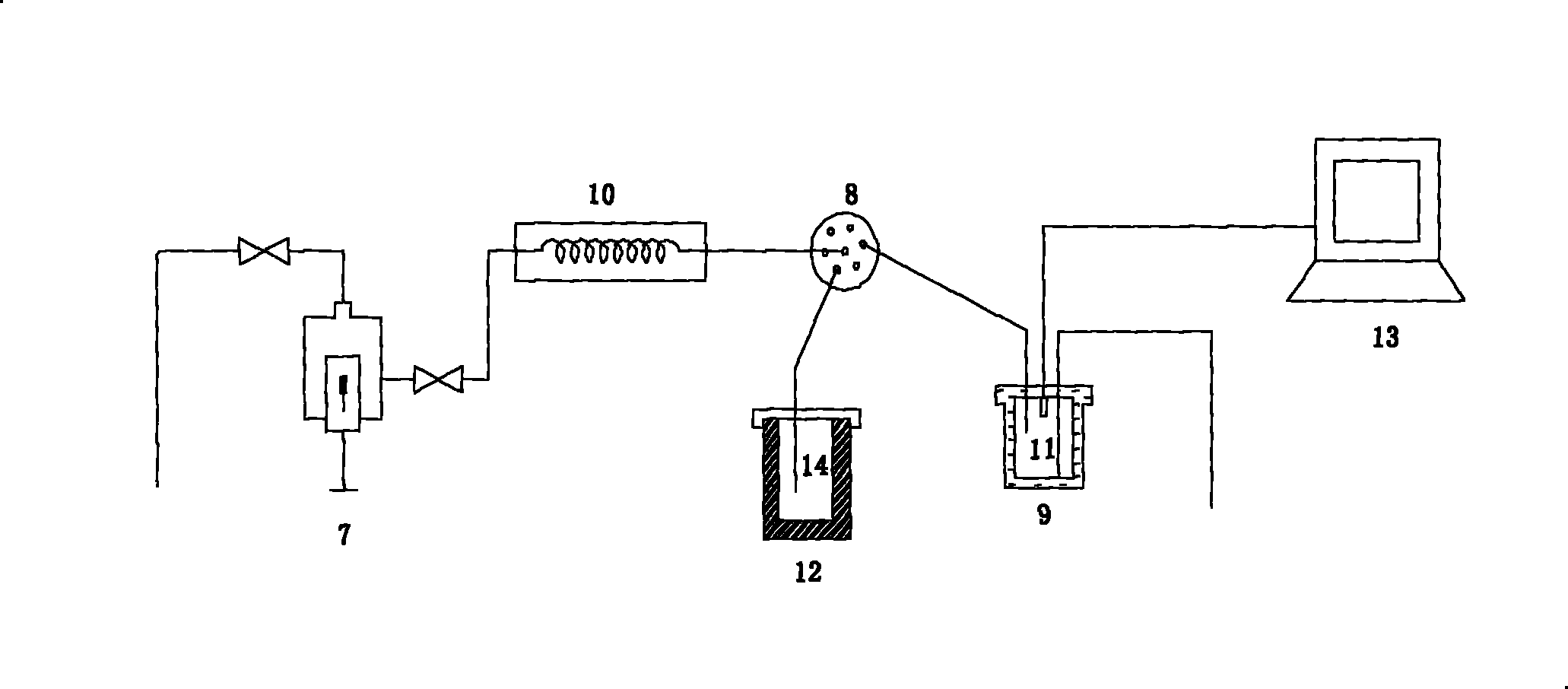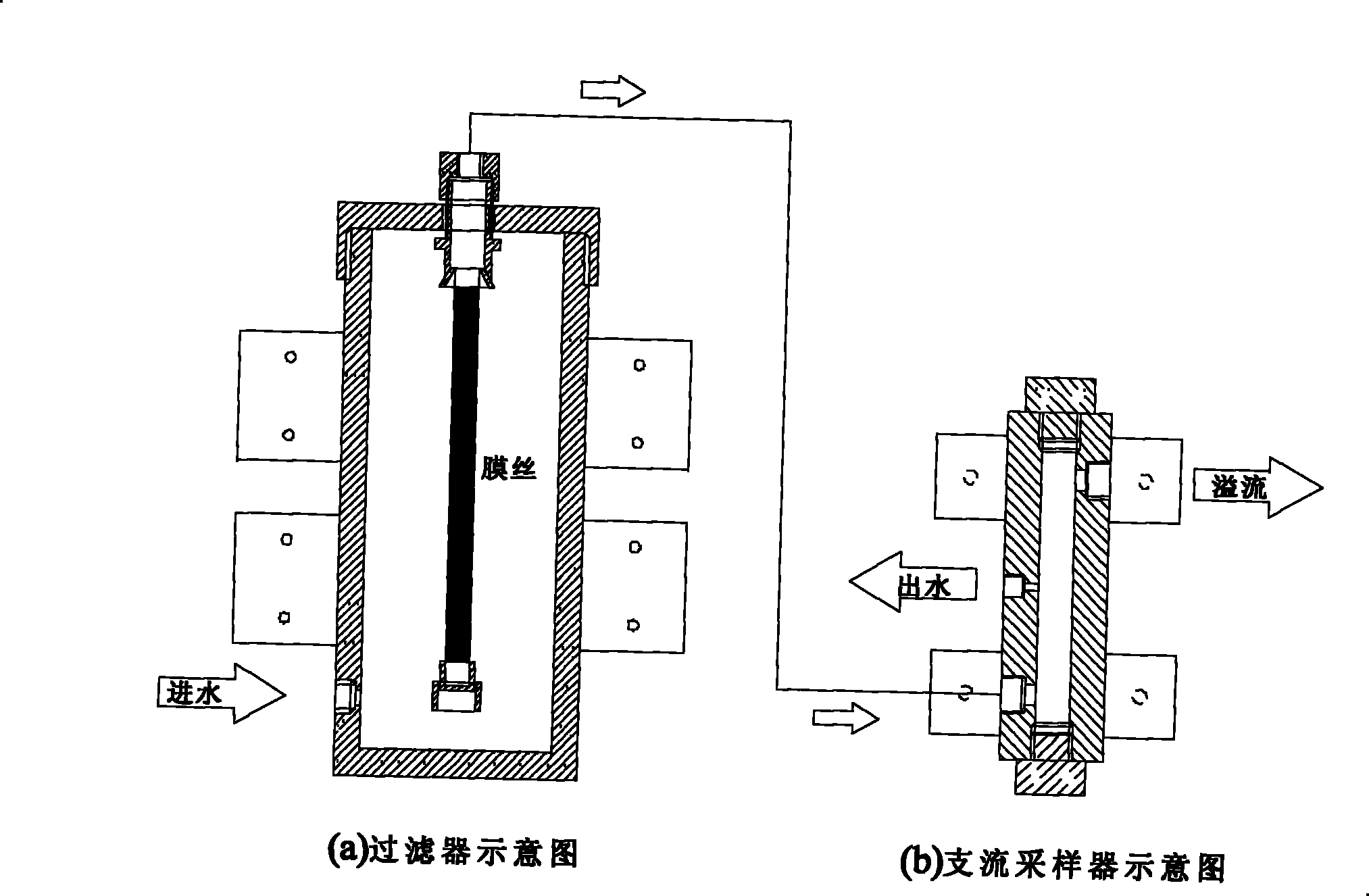Multichannel photobacteria on-line water quality toxicity monitoring device and monitoring method
A technology of luminescent bacteria and a monitoring device, which is applied in the field of environmental monitoring, can solve the problem of not being able to use a variety of luminescent bacteria at the same time, and achieve the effects of compact structure, high degree of automation, and simple operation
- Summary
- Abstract
- Description
- Claims
- Application Information
AI Technical Summary
Problems solved by technology
Method used
Image
Examples
Embodiment 1
[0032] Example 1: Cold storage and online recovery of luminescent bacteria
[0033] One of the core issues of the online monitoring device for water quality toxicity is to keep the biological activity of luminescent bacteria stable during the online operation, so as to ensure the reliability of continuous monitoring of the device. In the device system, the low-temperature storage tank of the water sample monitoring component can rapidly refrigerate highly active luminescent bacteria. Since the metabolism of luminescent bacteria is slow in the refrigerated environment of 5°C, once it is transferred to the environment of 20°C and revived, it can return to normal physiological activity in a short period of time. The formulation of the refrigerated reagent is as follows: medium (mass concentration) of Photobacterium brightens: 0.5% tryptone, 0.5% yeast extract, 0.3% glycerol, KH 2 PO 4 0.1%, Na 2 HPO 4 0.5%, NaCl 3%. Resuscitation solution (mass concentration): NaCl 2%. Usin...
Embodiment 2
[0034] Example 2: Pretreatment method of polluted water body by luminescent bacteria online detection system
[0035] The purpose of the pretreatment of the water toxicity online monitoring device is to ensure the long-term trouble-free operation of the main analysis flow path and the accuracy and reliability of the analysis results. Therefore, the suspended solids, sediment, and bacteria in the water must be removed, and at the same time, the comprehensive toxicity of the water must not be affected. . The development and design of the device system is attached image 3 The hollow fiber membrane online filter shown has an average pore diameter of 0.1 μm, and the membrane module consists of 70 membrane filaments, each of which is 300 mm long and 2 mm in diameter.
[0036] The pretreatment method is to use a diaphragm pump with a suction distance of 5m to pump the water sample into the filter, then pass through the filter membrane of the membrane module, and then lead it into t...
Embodiment 3
[0038] Example 3: luminescent bacteria on-line detection system detects Zn, cresol, ... pollutants
[0039] Using an online water quality toxicity monitoring device, the typical process of pollutant toxicity detection mainly includes six steps: adding buffer, adding bacteria, cultivating bacteria, adding water samples, inhibiting the reaction, and cleaning. The detection cycle of a sample is about 40min~60min Left and right, can be repeated automatically. Implementation method of toxicity detection: Taking cresol, a typical pollutant, as an example, the system sequentially adds a certain proportion of buffer solution and bacterial solution into the reactor and cultivates it for 10 minutes. Water samples, until the luminous intensity reaches the steady state of the lowest value, the data processing software will calculate the corresponding inhibition rate and EC after obtaining the highest and lowest values 50 value is fed back to the system. as attached Figure 5 Shown are ...
PUM
| Property | Measurement | Unit |
|---|---|---|
| length | aaaaa | aaaaa |
| pore size | aaaaa | aaaaa |
| area | aaaaa | aaaaa |
Abstract
Description
Claims
Application Information
 Login to View More
Login to View More - R&D
- Intellectual Property
- Life Sciences
- Materials
- Tech Scout
- Unparalleled Data Quality
- Higher Quality Content
- 60% Fewer Hallucinations
Browse by: Latest US Patents, China's latest patents, Technical Efficacy Thesaurus, Application Domain, Technology Topic, Popular Technical Reports.
© 2025 PatSnap. All rights reserved.Legal|Privacy policy|Modern Slavery Act Transparency Statement|Sitemap|About US| Contact US: help@patsnap.com



